Mimicry, where one organism evolves to resemble something else, is one of nature’s most remarkable tricks. Leaf mimicry is especially clever because it allows animals to blend in with their surroundings, either to avoid becoming prey or to sneak up on unsuspecting targets. These fascinating animals look so much like leaves that they’re nearly impossible to spot. This evolutionary adaptation is most commonly seen in insects, but you’ll also find it in reptiles, amphibians, and even fish! Let’s take a closer look at nine incredible examples of leaf mimics from around the world.
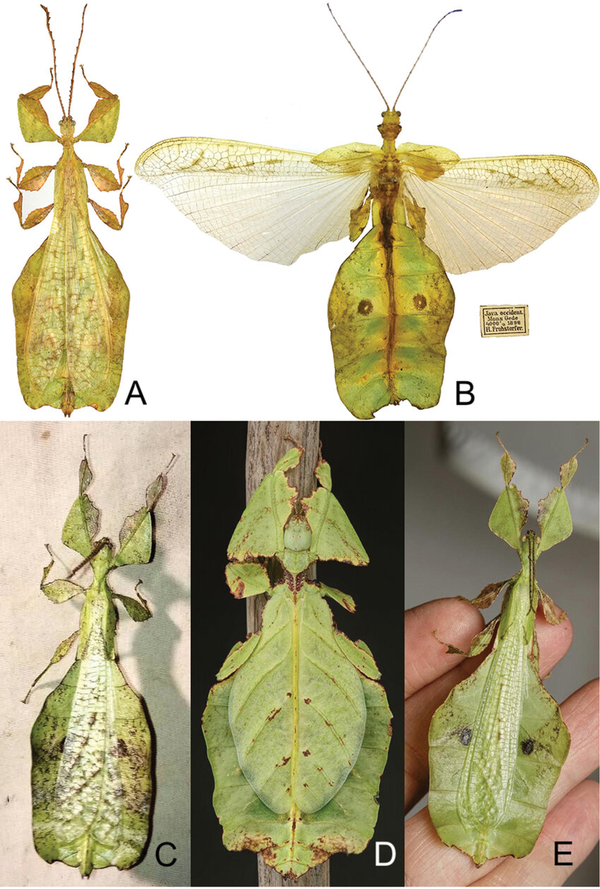
Found throughout Southeast Asia and parts of Australia, the giant leaf insect is often called the “walking leaf.” This insect’s resemblance to a real leaf is so convincing that it can fool both predators and humans alike. Its green body has veins like those of a plant, and it even sways gently in the wind, just like a leaf. This camouflage helps the insect remain undetected while feeding on plants, avoiding hungry birds or other predators.
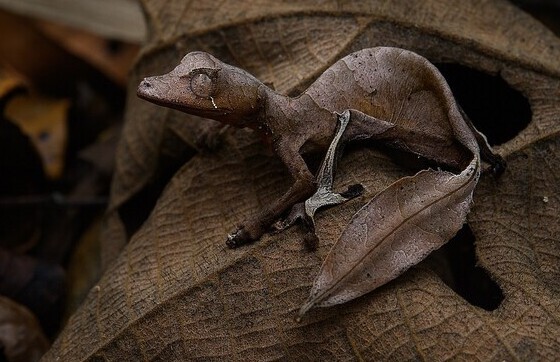
Native to Madagascar, the satanic leaf-tailed gecko has earned its eerie name due to its distinctive appearance. This reptile looks exactly like a dead, curled-up leaf, complete with the browns, yellows, and speckled patterns you’d expect to see on fallen foliage. Its tail mimics the torn edges of a decaying leaf, making it blend perfectly with the forest floor. This camouflage is crucial for staying hidden from predators, such as birds, while also sneaking up on insects it preys upon.
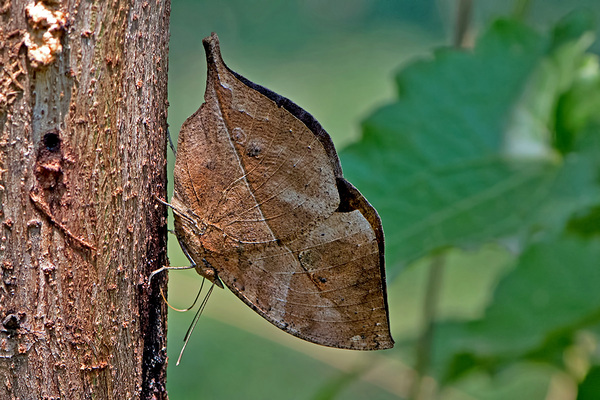
The Indian oakleaf butterfly, native to tropical Asia, is a master of disguise. When its wings are folded, it looks exactly like a dried leaf, complete with leaf veins and a slightly curved "stem" that mirrors a leaf stalk. The top of its wings, however, displays vibrant colors—bright blues and oranges—which it uses to startle predators when in danger. This dual-purpose camouflage allows the butterfly to stay hidden when it’s resting and flash bright colors to escape when threatened.
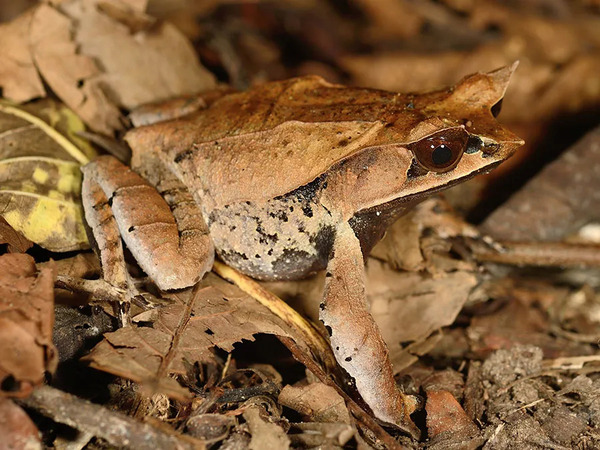
The Malayan leaf frog, found in the rainforests of the Malay Peninsula and the islands of Sumatra and Borneo, looks uncannily like a damp, rotting leaf. With its mottled brown and green skin, this frog blends perfectly with the forest floor’s leaf litter. Its pointed snout and ridged body help it camouflage even better. This disguise not only keeps the frog safe from predators but also helps it ambush prey like insects and small invertebrates that come too close.
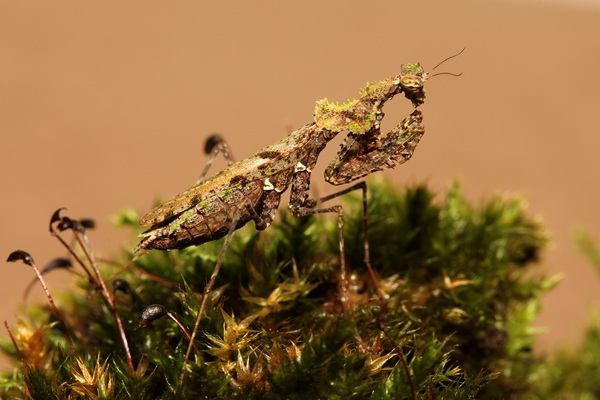
The moss mantis is an insect from Asia that takes camouflage to another level. Its body doesn’t just look like a single leaf but rather a clump of moss or a collection of tiny leaves. With its uneven, jagged edges and various shades of green, the moss mantis can disappear into its surroundings in forests, blending into moss-covered rocks and branches. This clever mimicry makes it almost invisible to both predators and prey.
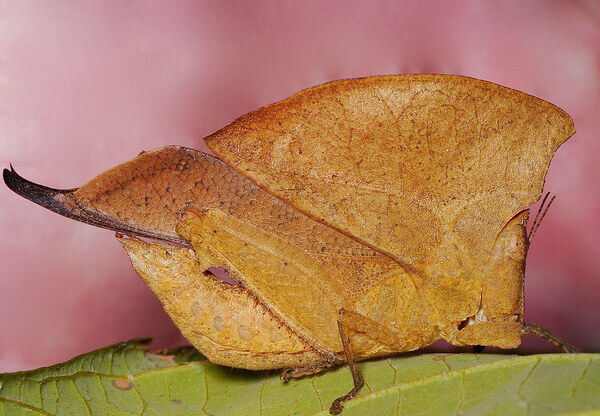
The dead-leaf grasshopper, native to Malaysia, is a brownish insect that looks like a dead, curled-up leaf lying on the forest floor. Its wings mimic the exact patterns of decaying leaves, complete with spots, holes, and cracks. This helps the grasshopper avoid being eaten by birds or reptiles while it rests motionless during the day. The grasshopper becomes active at night, feeding on plants, and its camouflage keeps it safe from nocturnal predators as well.

Found in the murky waters of the Amazon River basin, the South American leaf fish is an expert at leaf mimicry. Its flat, brown body closely resembles a dead leaf floating in the water. This disguise helps it drift along with the current, unnoticed by other fish. But there’s more to its trickery—the leaf fish is an ambush predator. It uses its leaf-like appearance to get close to smaller fish before quickly striking. Its patience and camouflage make it a highly effective hunter in its underwater world.
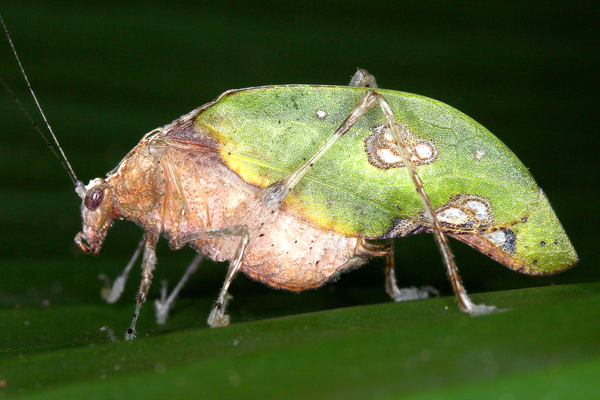
The leaf katydid, found throughout Central America and parts of Mexico and northern South America, is a striking example of leaf mimicry in the insect world. This katydid not only looks like a leaf, but it can also adjust its coloration to match the leaves in its environment. Its long wings have intricate vein patterns that make it almost indistinguishable from the plants it rests on. This camouflage is crucial for avoiding predators such as birds and reptiles, as well as for ambushing its prey.
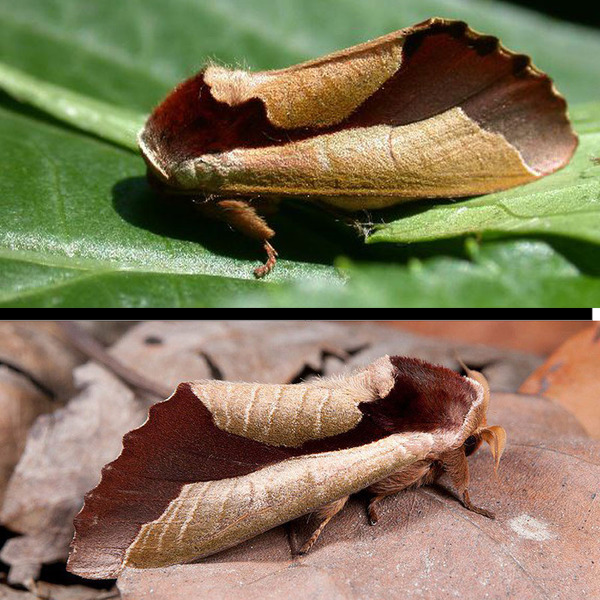
Native to China and Taiwan, the dead-leaf moth is one of the most convincing leaf mimics in the insect world. Its wings curl inward, resembling a dry, curled-up leaf that might have fallen from a tree. The moth’s coloration, from browns to yellows, perfectly matches the forest floor’s debris. This incredible mimicry helps the moth avoid being spotted by birds and other predators. It spends most of its time during the day resting on the ground, blending seamlessly into its surroundings.

Katydid nymphs, especially those in the early stages of development, often have an even stronger resemblance to leaves than their adult counterparts. Their bodies are not only green but also veined and shaped like fresh leaves, helping them hide from predators. Some katydid nymphs can even mimic the appearance of damaged or decaying leaves, complete with discoloration and "bite marks" to enhance the disguise. These insects are found in various regions, including tropical and temperate forests worldwide, and are known for their leaf-like bodies that help them evade birds and other predators.
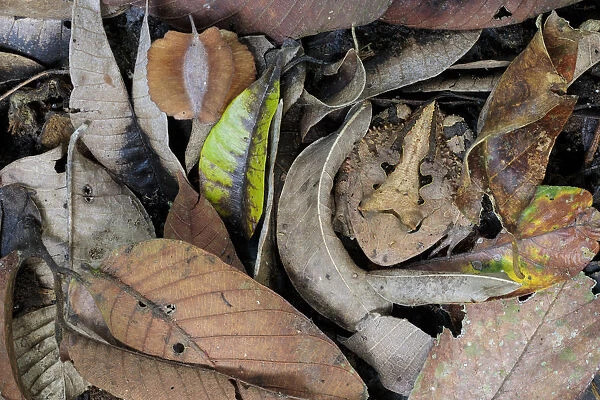
The Amazonian horned frog, also known as the Surinam horned frog, is found in South America, particularly in the Amazon basin. Its body is wide and flat, with coloration and patterns that mimic leaf litter. The frog's large head and leaf-like body make it an excellent ambush predator. It buries itself in the forest floor, with only its leaf-patterned eyes and head showing, waiting for unsuspecting prey to come close. This clever mimicry helps it blend in seamlessly with the surrounding dead leaves.
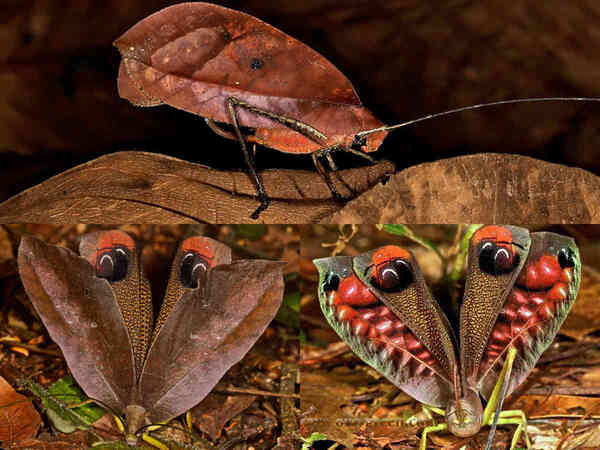
Another fascinating katydid species, the leaf mimic katydid, is native to the tropical forests of Central and South America. This katydid's wings are shaped and colored like dead leaves, with brownish tones and vein patterns that perfectly imitate a decaying leaf. The detail of the camouflage is so accurate that the katydid even has dark spots that mimic fungal growth or mold that you might find on a real leaf. It is one of the best examples of leaf mimicry in the insect world, using its disguise to avoid predators while it rests during the day.

The Vietnamese mossy frog takes camouflage to a whole new level. Found in the rainforests of Vietnam, this amphibian not only mimics a leaf but also moss and lichen-covered rocks. Its skin is a mix of greens, browns, and blacks, covered with bumps and ridges that make it look like a clump of moss or a decaying leaf covered in algae. This camouflage makes it nearly invisible against the forest floor, where it hides during the day. Its leaf-mimicking appearance helps protect it from predators, such as birds and snakes.
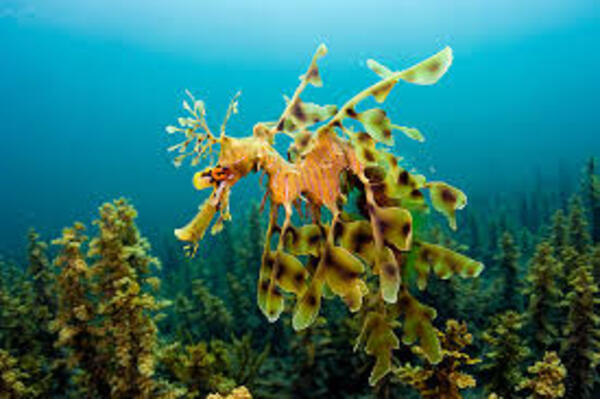
The leafy seadragon, native to the waters off the southern coast of Australia, is a marine animal that takes leaf mimicry underwater. Unlike most of the other animals on this list, which resemble land leaves, the leafy seadragon looks like floating seaweed or kelp leaves. Its long, slender body is adorned with leaf-like appendages that flow in the water, helping it blend in with underwater vegetation. This camouflage helps the seadragon avoid predators while it slowly moves through its habitat, hunting for small crustaceans and plankton.
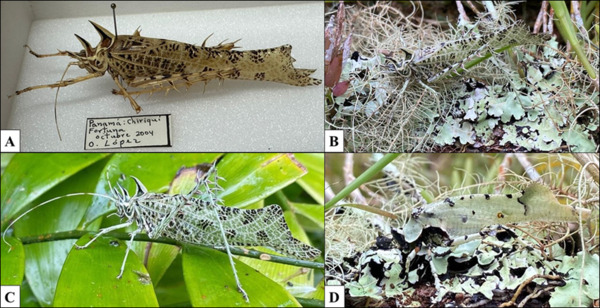
The lichen katydid, found in the forests of Central and South America, mimics both leaves and lichen-covered branches. Its green and brown body, covered with tiny, leaf-like projections, helps it blend in with the foliage and lichen it lives among. This camouflage serves two purposes: it protects the katydid from predators and allows it to remain hidden while it waits to ambush small insects. Its ability to imitate both plant matter and lichen makes it a unique and highly effective leaf mimic.
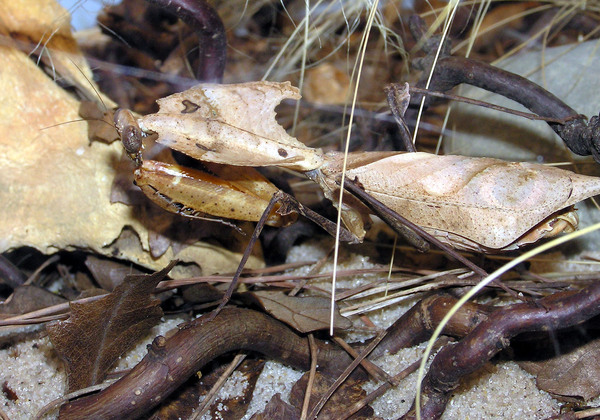
Native to Southeast Asia, the dead leaf mantis is another expert at mimicry. This insect doesn’t just look like a leaf—it looks like a dry, shriveled-up dead leaf. Its brown, mottled body even has rough edges that resemble the torn or bitten parts of a decaying leaf. When threatened, the mantis will drop to the ground and remain motionless, blending perfectly with the leaf litter on the forest floor. This strategy helps the mantis avoid becoming prey, while also allowing it to ambush unsuspecting insects that come too close.
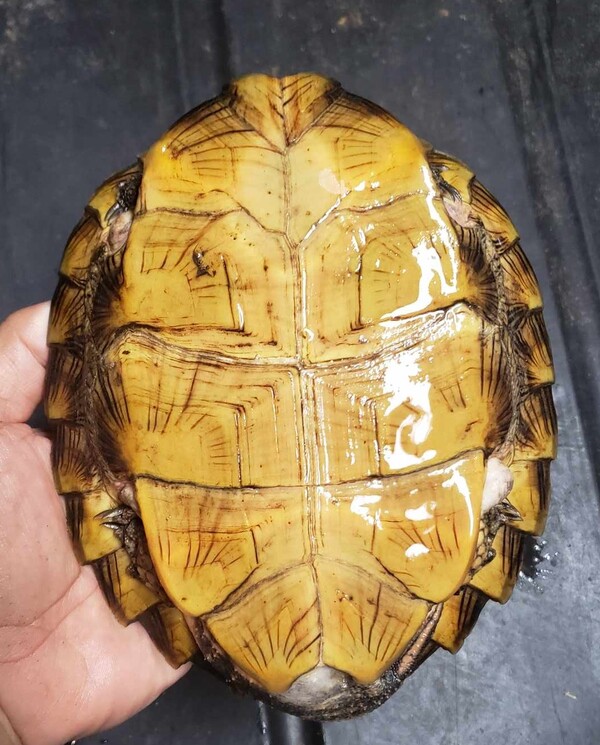
The eastern leaf turtle, native to Southeast Asia, has a brown, leaf-like shell that helps it blend in with the forest floor. Its carapace is flattened and oval-shaped, resembling a fallen leaf, and its brown coloration with darker spots and streaks mimics the patterns found on dead leaves. This natural camouflage helps the turtle avoid detection by predators, such as birds of prey, while it forages for food in the leaf litter. The leaf-like appearance is especially useful for young turtles, which are more vulnerable to predation.
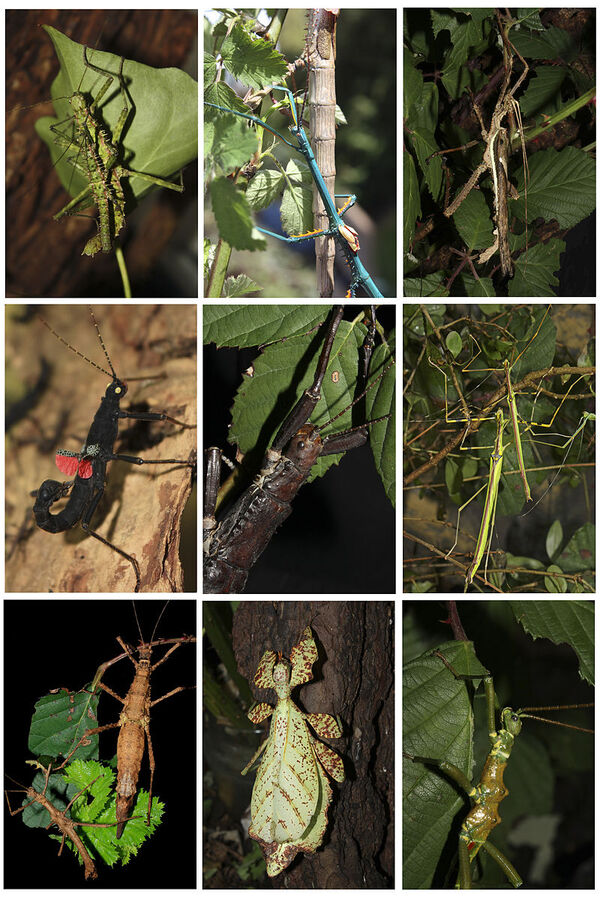
While stick insects are more famous for resembling twigs, some species have evolved to look like leaves. Certain types of stick insects, particularly those from tropical regions, have flattened, broad bodies and wings that mimic green or brown leaves. Their legs often resemble leaf stems, and they may even have vein-like markings on their bodies. Some stick insects will sway gently, mimicking the movement of a leaf in the breeze to enhance their disguise. This incredible adaptation helps them stay hidden from predators such as birds and lizards.
From the giant leaf insect to the leafy seadragon, nature is filled with incredible examples of animals that have evolved to look like leaves. This remarkable adaptation has allowed many species to thrive by avoiding predators or hunting prey in their environments. These animals remind us of the extraordinary diversity of life on Earth and the creative ways in which species can evolve to survive.
Leaf mimicry is not just a visual trick—it’s an essential survival strategy that plays a vital role in the lives of these fascinating creatures. The next time you’re exploring nature, take a closer look—you might just find that what appears to be a simple leaf is actually a cleverly disguised animal!
animal tags: Phasmatodea
We created this article in conjunction with AI technology, then made sure it was fact-checked and edited by a Animals Top editor.